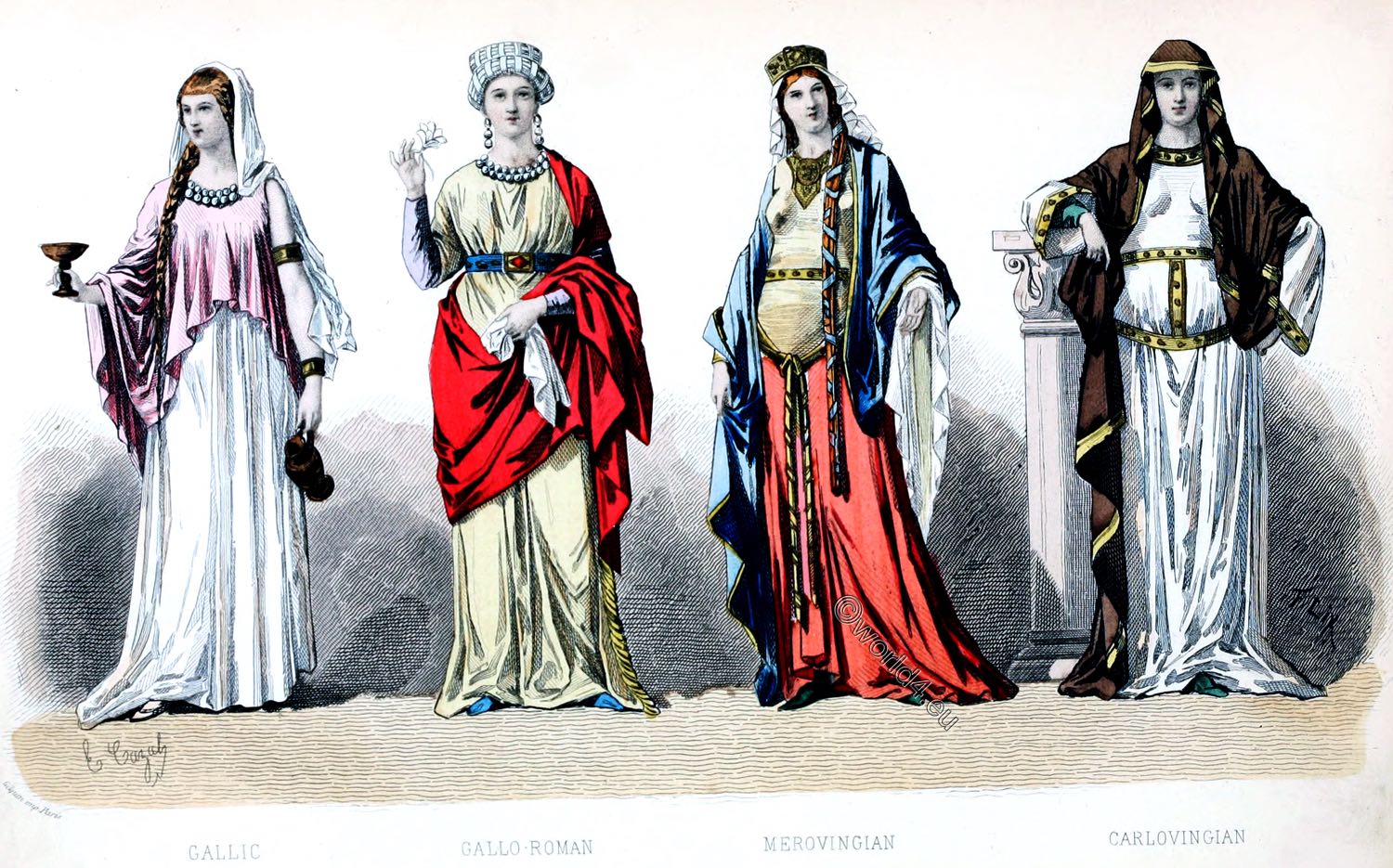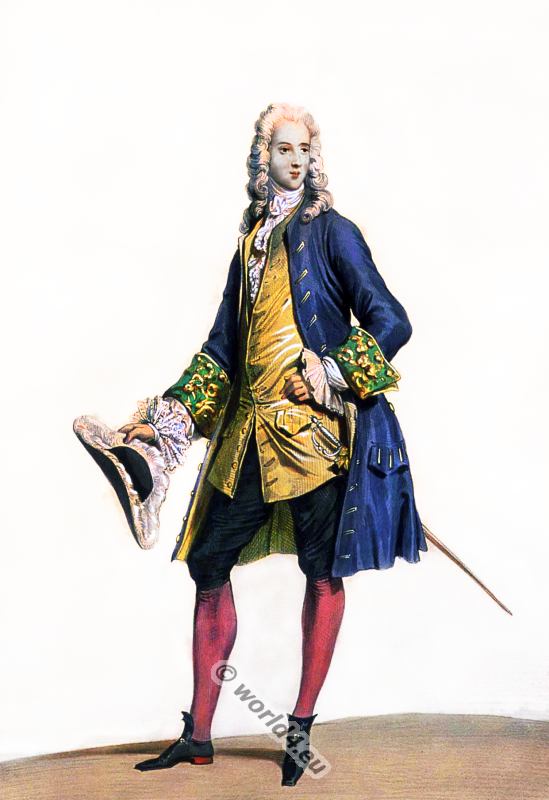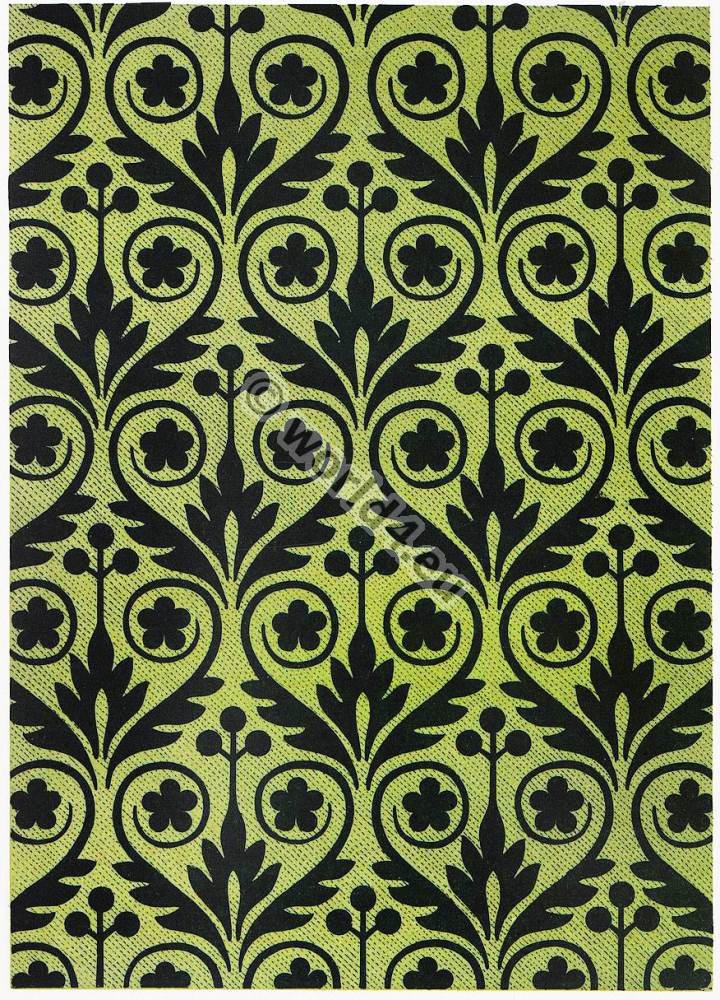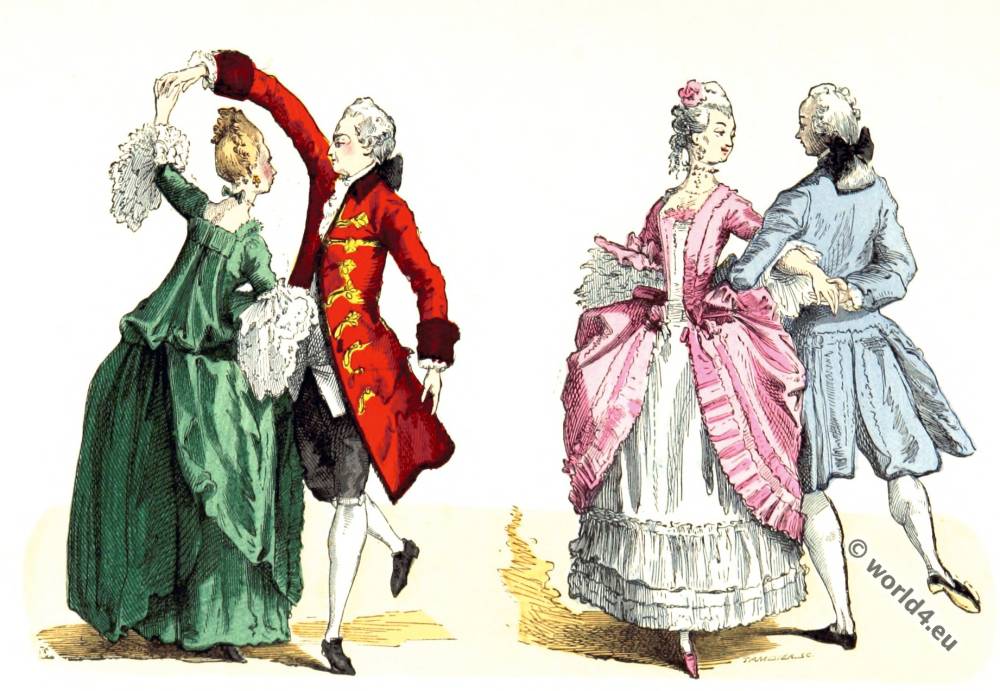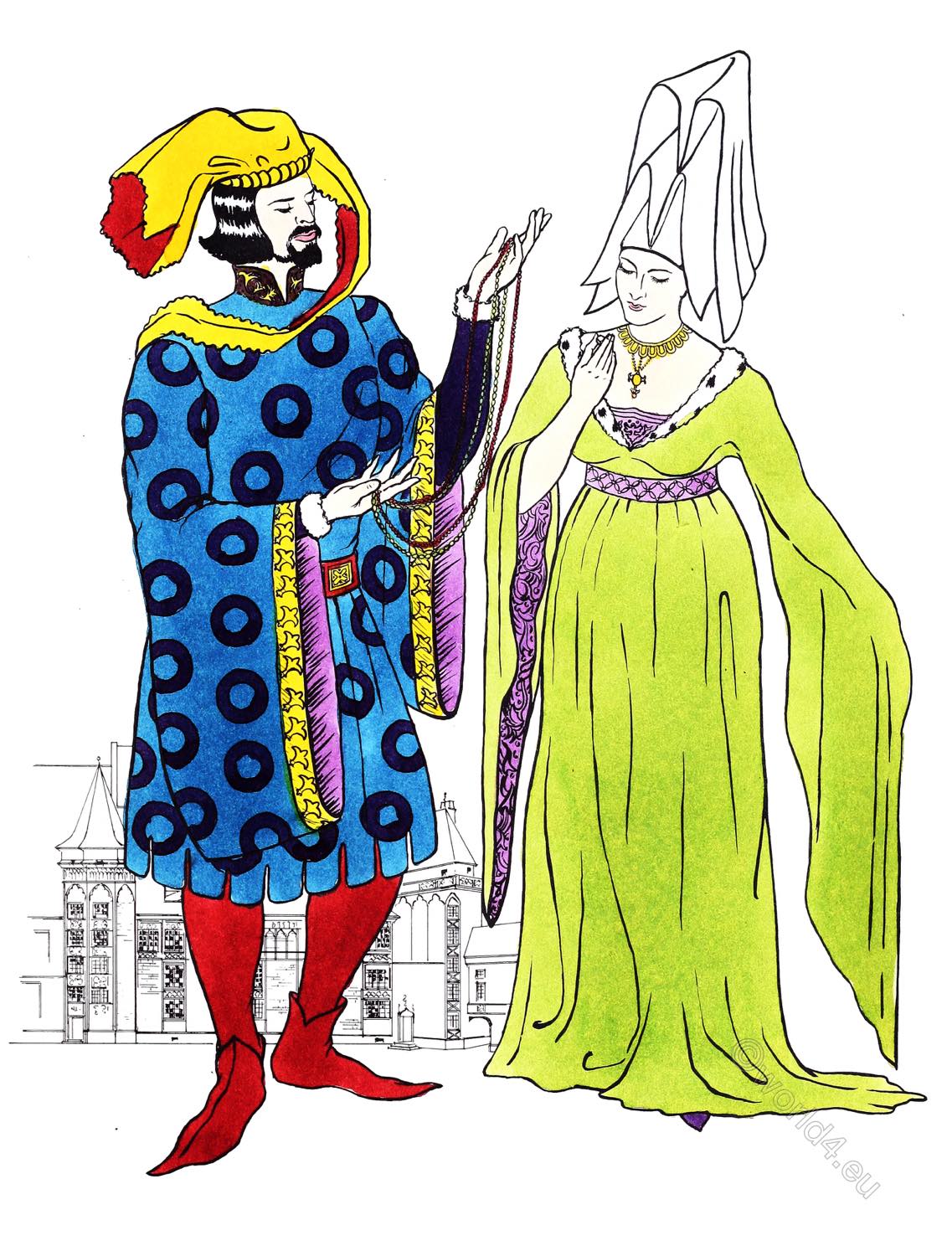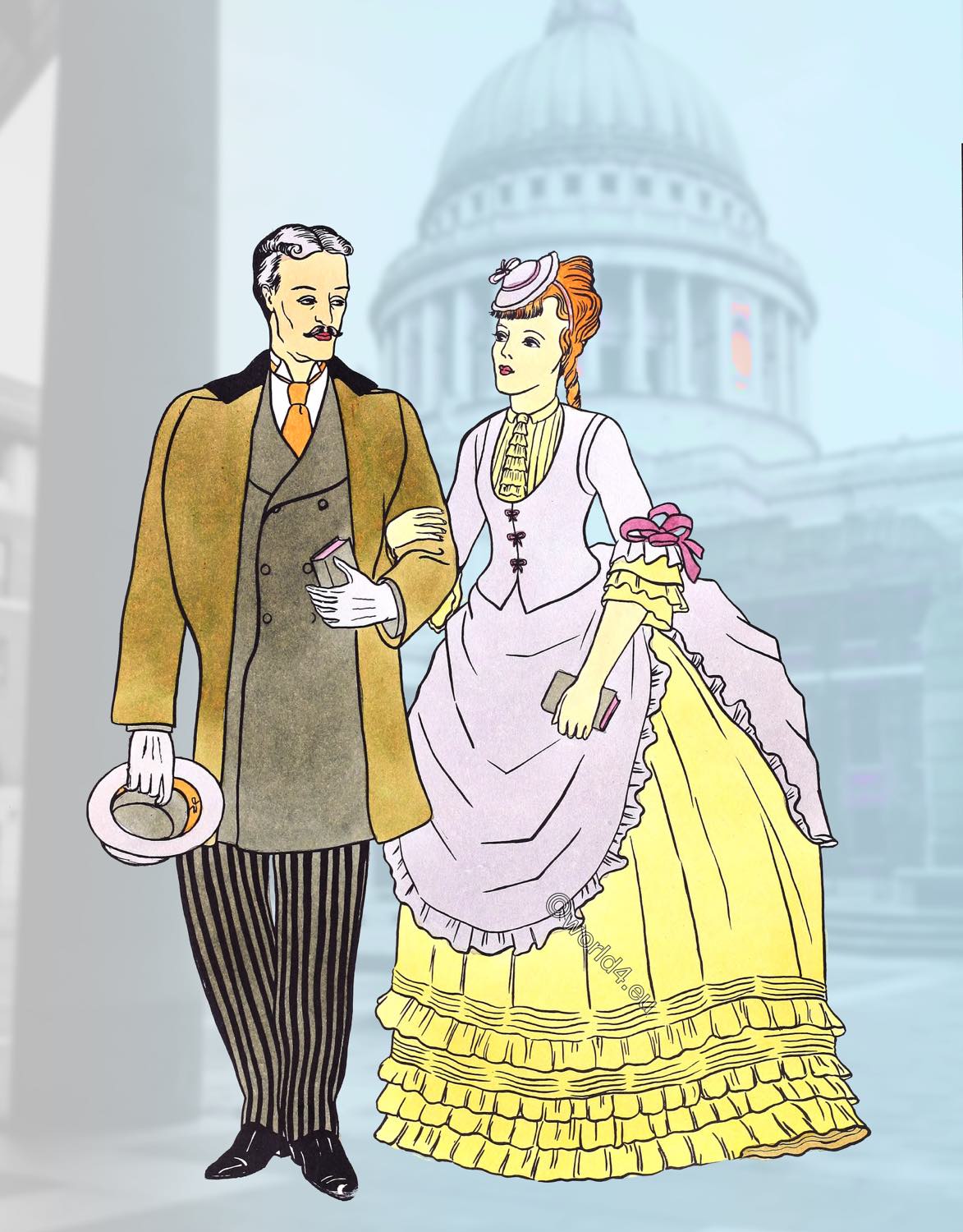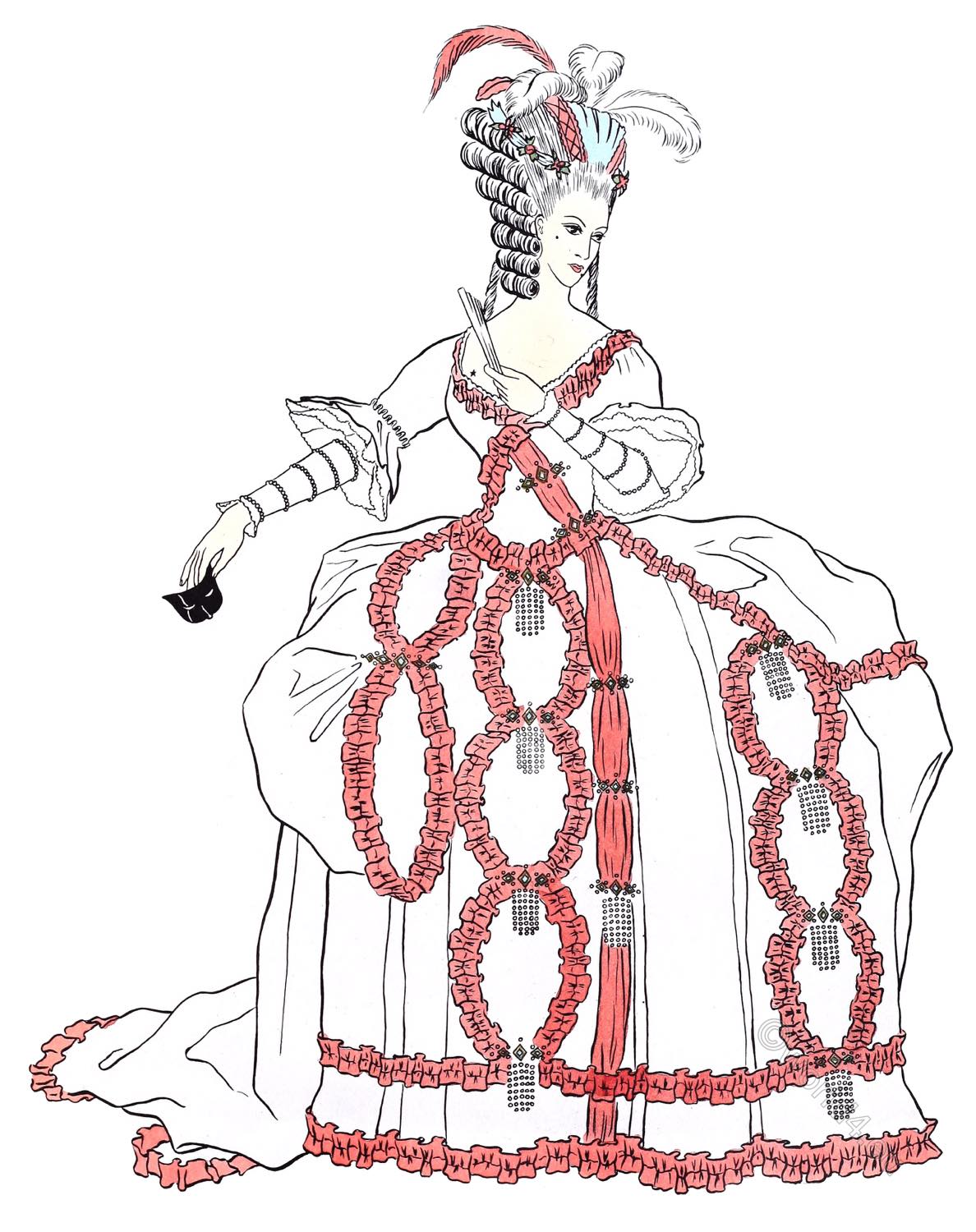
LOUIS XVI.
Ballroom costume 1775-1789.
PLATE NO. 76
The rather startling figure in this plate is wearing a ballroom costume of the late Louis XVI period. It contains almost every possible exaggeration that could be heaped upon an already overdeveloped style. It seems strangely fitting that so cumbersome and absurd a dress should be swept away by the French Revolution.
The headdress, although it requires a careful, second look to determine it, is still the pompadour, but so laden with plumes, padding, jewelry, roll curls, sausage curls, and powder that it has quite lost its simple charm. Strange as it may seem, the headdress here represented was by no means the worst to be found in these changing times. Almost any sort of trinket was apt to appear as hair decoration, even models of ships or windmills. Note the beauty mark in the form of a black dot of court plaster placed beneath the right eye; also the star above the right breast. Such attempts to emphasize beauty and direct the focus of admiring eyes was common to both the male and female dandies of the period.
The round-cut neckline was not as often favored with this type of costume as was the square. The elbow-length sleeves with the flaring lace cuffs worn over a full-length chemise sleeve were more typical, although relatively conservative compared to those entirely of lace that appeared on some of these exaggerated models.
The outer skirt has by now almost become a curtain with its tasseled furbelowed, ruched, ruffled, and lilted surface. The panniers were still preserved for these party ensembles, and with them reached probably their greatest distention, placing the wearer in the midst of an ellipse of frills, loops, lace, ribbons, and fluffs, spread over both outer skirt and petticoat, that only a wedding cake could duplicate. To make matters even more complicated, some models, such as that in the picture, allowed the long outer skirt to form a train.
The mask and fan indicate the young lady’s attendance at a ball, but one wonders whether the mask is necessary to conceal her identity since the costume practically conceals her species.
Source: Museum Extension Project. History of Costume.
Related
Discover more from World4 Costume Culture History
Subscribe to get the latest posts sent to your email.

